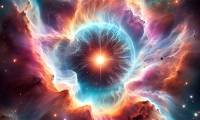
An experiment targeting the chaotic and dead regions of the universe could help explain the origin of life on Earth.
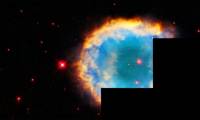
The Hubble Space Telescope - being operated jointly by NASA and ESA - has captured a beautiful nebula 1,370 light-years away.

The latest image of the planetary nebula NGC 2371/2 released by NASA last week shows the remnants of a dying star.
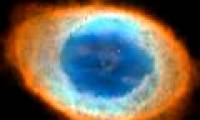
The Ring Nebula looks like a giant gas ring around a white dwarf star. It is seen as representing the fate of the Sun-like stars.
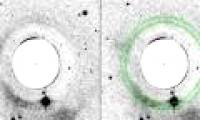
Using ESO's Very Large telescope, international astronomers detect ionizing halo around planetary nebula IC 5148.

The team of astronomers at the Institute of Astrophysics in Andalucia (Spain) led by Martin Guerrero discovered a nebula

The nebula is a celestial body in the form of cloudy clouds consisting of stellar gas and cosmic dust. The proportion of matter in the nebula very low. If measured by the

Scientists discover giant plasma spheres that are launched at lightning speed near a dying star.

The bright red eye nebula image is in the sights of the Spitzer space telescope of the US Aerospace Agency.

International astronomers have just confirmed the Boomerang nebula, 5,000 light-years from Earth, the coldest region in the universe with a temperature of about -272.2 degrees
 An experiment targeting the chaotic and dead regions of the universe could help explain the origin of life on Earth.
An experiment targeting the chaotic and dead regions of the universe could help explain the origin of life on Earth. The Hubble Space Telescope - being operated jointly by NASA and ESA - has captured a beautiful nebula 1,370 light-years away.
The Hubble Space Telescope - being operated jointly by NASA and ESA - has captured a beautiful nebula 1,370 light-years away. The latest image of the planetary nebula NGC 2371/2 released by NASA last week shows the remnants of a dying star.
The latest image of the planetary nebula NGC 2371/2 released by NASA last week shows the remnants of a dying star. The Ring Nebula looks like a giant gas ring around a white dwarf star. It is seen as representing the fate of the Sun-like stars.
The Ring Nebula looks like a giant gas ring around a white dwarf star. It is seen as representing the fate of the Sun-like stars. Using ESO's Very Large telescope, international astronomers detect ionizing halo around planetary nebula IC 5148.
Using ESO's Very Large telescope, international astronomers detect ionizing halo around planetary nebula IC 5148. The team of astronomers at the Institute of Astrophysics in Andalucia (Spain) led by Martin Guerrero discovered a nebula
The team of astronomers at the Institute of Astrophysics in Andalucia (Spain) led by Martin Guerrero discovered a nebula The nebula is a celestial body in the form of cloudy clouds consisting of stellar gas and cosmic dust. The proportion of matter in the nebula very low. If measured by the
The nebula is a celestial body in the form of cloudy clouds consisting of stellar gas and cosmic dust. The proportion of matter in the nebula very low. If measured by the Scientists discover giant plasma spheres that are launched at lightning speed near a dying star.
Scientists discover giant plasma spheres that are launched at lightning speed near a dying star. The bright red eye nebula image is in the sights of the Spitzer space telescope of the US Aerospace Agency.
The bright red eye nebula image is in the sights of the Spitzer space telescope of the US Aerospace Agency. International astronomers have just confirmed the Boomerang nebula, 5,000 light-years from Earth, the coldest region in the universe with a temperature of about -272.2 degrees
International astronomers have just confirmed the Boomerang nebula, 5,000 light-years from Earth, the coldest region in the universe with a temperature of about -272.2 degrees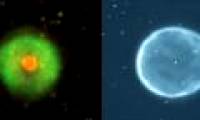

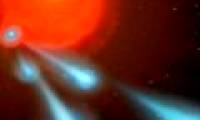


 NASA's 'Ninth Planet' Shows Signs of Being Friendly to Life
NASA's 'Ninth Planet' Shows Signs of Being Friendly to Life Why did American astronauts have to be quarantined when returning to Earth?
Why did American astronauts have to be quarantined when returning to Earth? China surprises the world by building a cable-stayed bridge 'above the clouds'
China surprises the world by building a cable-stayed bridge 'above the clouds' Why do women sleep less and wake up more than men?
Why do women sleep less and wake up more than men? Revealing the secret inside the stuffed animal claw machine, from there, summarizing experience to help you increase your winning rate many times over
Revealing the secret inside the stuffed animal claw machine, from there, summarizing experience to help you increase your winning rate many times over What would happen if you dug a hole through the Earth and jumped in?
What would happen if you dug a hole through the Earth and jumped in? Camera takes a photo that lasts 1,000 years
Camera takes a photo that lasts 1,000 years Was there nuclear war in ancient times?
Was there nuclear war in ancient times?